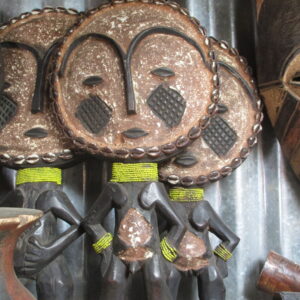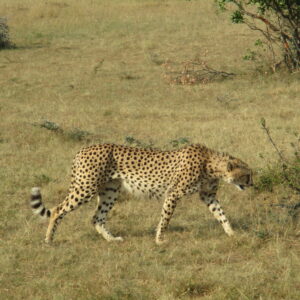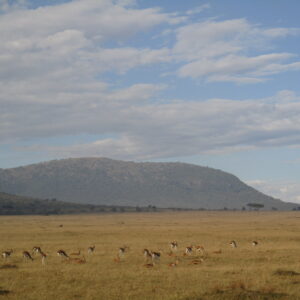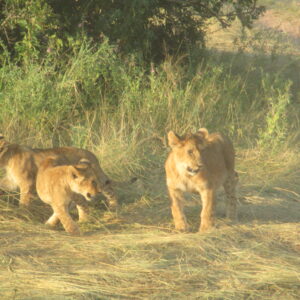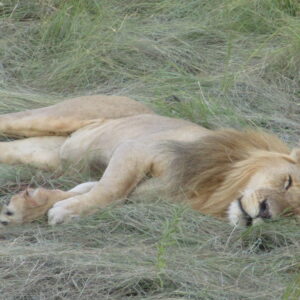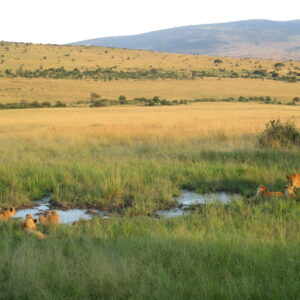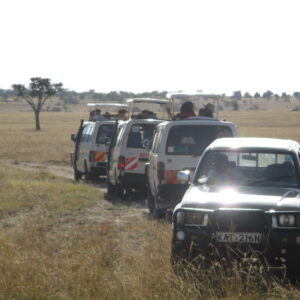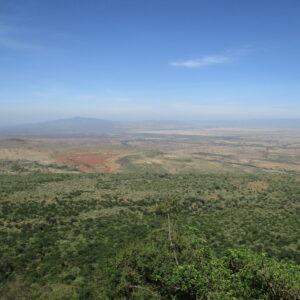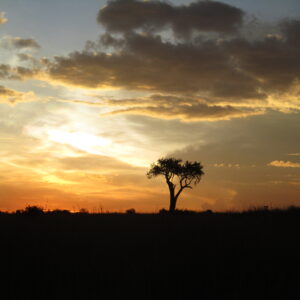Isn’t it enough just to be in a place where God showered with blessings? Isn’t it enough to be in nature and enjoy the wonderful landscape it decides to show us at a moment’s notice?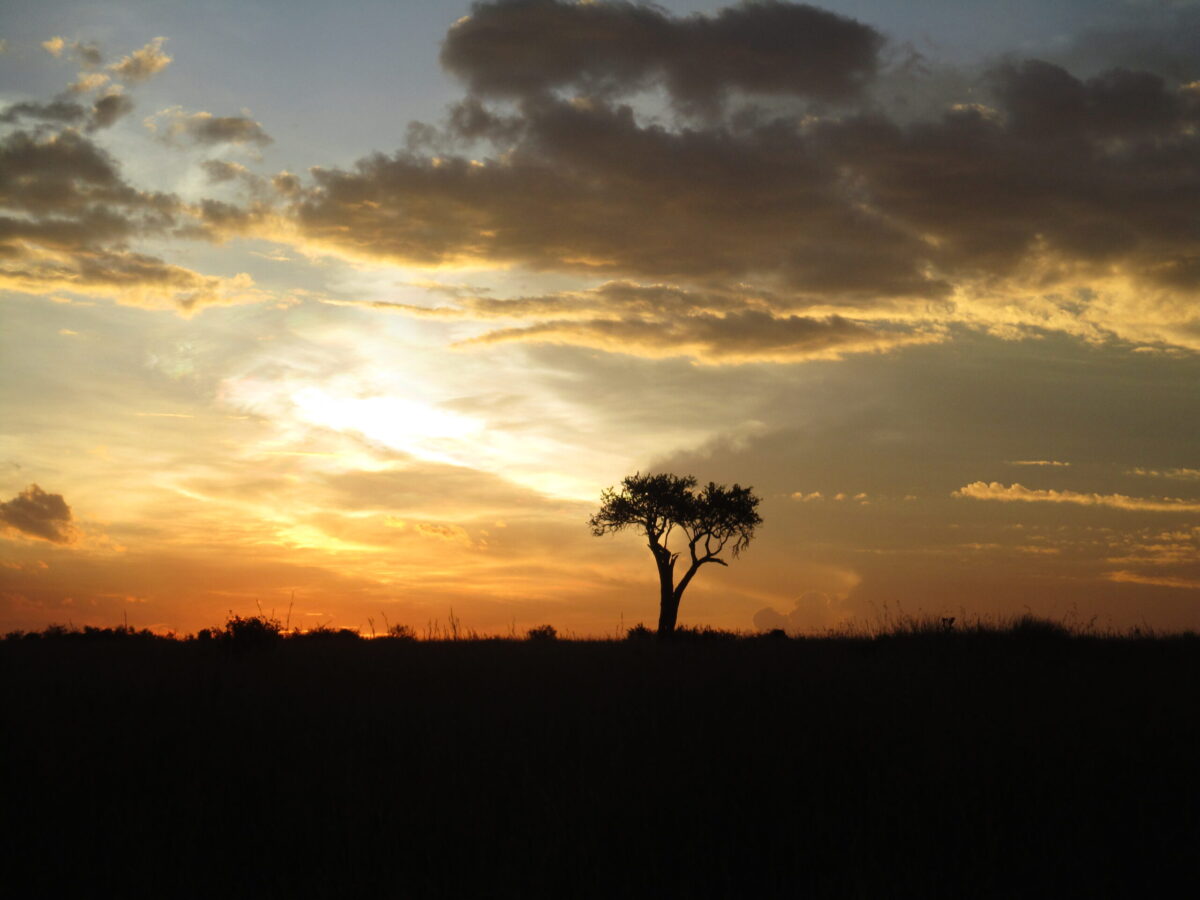 As many as fifty national parks and an entire tourism industry live off people seeing lions, giraffes, zebras and other animals in the wild, making Kenya one of the most attractive safari destinations in the world. That wave of travellers pulled me in too. Kenya is rich and diverse enough to deserve a visit even without going on a safari, and it is good, even necessary, to contribute to saving nature through tourism, because if there were no tourists, the question is what would remain of distant wilderness – all the animals would have long since been killed and made into jewellery, clothes or ornaments for the rich around the world. At the hotel, I didn’t need too much persuading to join the group that headed to the most important Kenyan park – Maasai Mara.
As many as fifty national parks and an entire tourism industry live off people seeing lions, giraffes, zebras and other animals in the wild, making Kenya one of the most attractive safari destinations in the world. That wave of travellers pulled me in too. Kenya is rich and diverse enough to deserve a visit even without going on a safari, and it is good, even necessary, to contribute to saving nature through tourism, because if there were no tourists, the question is what would remain of distant wilderness – all the animals would have long since been killed and made into jewellery, clothes or ornaments for the rich around the world. At the hotel, I didn’t need too much persuading to join the group that headed to the most important Kenyan park – Maasai Mara.
Five of us squeezed into a rickety and dilapidated minibus. As soon as you leave Nairobi, the road winds along a hill from which you can see the wilderness – plains, distant hills, with only a few buildings in sight… For six hours, we travel through magical landscapes, peeking out of the rundown vehicle to see some traces of beauty. We spend a break in a shack, cheerfully and naively painted with animals, like in a cartoon. Strange creatures roam the bushes, while a family of monkeys has found its home along the main road. There is even a special traffic sign – “Beware of monkeys!” – since it is not uncommon for them to cause traffic accidents. A few striking white space exploration satellites flanked by cows rise from the vast bush-studded plain. It is part of the Kenyan space programme that is currently being developed. The convenient location on the equator, next to the Indian Ocean, has been the most exploited by the Italians so far, making Kenya the only country in East Africa with a spaceport.
The question is what would remain of distant wilderness – all the animals would have long since been killed and made into jewellery, clothes or ornaments for the rich around the world
Along the road, battered cars are placed on high metal stands: a reminder that this is one of Kenya’s busiest highways, where many people die every year. Our driver doesn’t care, he drives too fast, runs into curves, brakes suddenly, and the whole minibus bounces wildly on potholes and we fear that its wheels will fall off. Up to thirteen thousand people die on Kenyan roads every year! So it’s not surprising that my friends told me that the most dangerous part of the safari was the way to it. It is a much greater risk to spend six hours bouncing around in a tin can that tumbles down the road, than to spend six hours looking for lions in the wild.
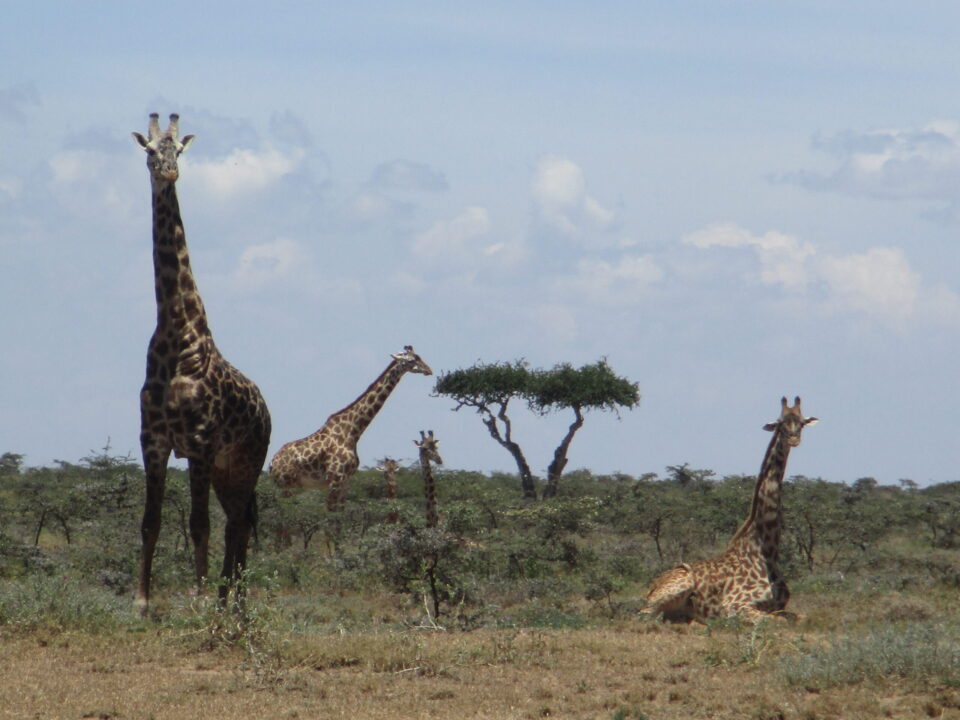 At one point we change the vehicle, as an upgraded minibus comes to pick us up – a rickety one at least thirty years old, with the roof removed, so that most of the passengers can stand up and observe the wilderness more clearly. As soon as we entered the park, we encountered a dozen giraffes who were calmly watching us. Some sit in the bushes, others cruise around. The panorama of the plain, over which the view extends to the horizon, makes large animals easy to spot from a great distance. I can just see a wide green-yellow expanse, some trees and elegant silhouettes of animals. That’s why the locals named this whole area Mara, which means “seen, noticed”.
At one point we change the vehicle, as an upgraded minibus comes to pick us up – a rickety one at least thirty years old, with the roof removed, so that most of the passengers can stand up and observe the wilderness more clearly. As soon as we entered the park, we encountered a dozen giraffes who were calmly watching us. Some sit in the bushes, others cruise around. The panorama of the plain, over which the view extends to the horizon, makes large animals easy to spot from a great distance. I can just see a wide green-yellow expanse, some trees and elegant silhouettes of animals. That’s why the locals named this whole area Mara, which means “seen, noticed”.
“When you say you’re blue-blooded, you’re actually saying you’re a giraffe,” Marcus jokes, and then he explains that the blood of these long-necked beauties lacks haemoglobin, which normally gives the blood a red colour, so when they’re cut, a blue liquid pours out of them. Marcus is Romanian, one of the five of us bouncing together in a metal hulk racing across the savannah. A dozen giraffes are watching our movement curiously. I thought that this vehicle that looks like a neurotic grasshopper must look comical to them from that height. The wheels roll on two goat tracks and we spring through the roof of the vehicle, taking care not to fall.
“When you say you’re blue-blooded, you’re actually saying you’re a giraffe”
Marcus is the most impressive character in our group, a worker in a Romanian factory and an amateur photographer. He carries long lenses with him, so it seems that the camera is some kind of cannon that is about to fire. And yet, that expensive technical marvel keeps getting on his nerves. To take a good photo, depending on the distance of the animals, he has to adjust the lens or replace it entirely. This takes time. Animals in the wild are not good extras and are not willing to pose while he adjusts his camera. So he constantly misses the good scenes, he gets annoyed, can hardly refrain from cursing and furiously hits the body of our vehicle with his hand, which is already battered enough. We calm him down and promise to send him our photos, which are not nearly as good as his, but at least there is something on them.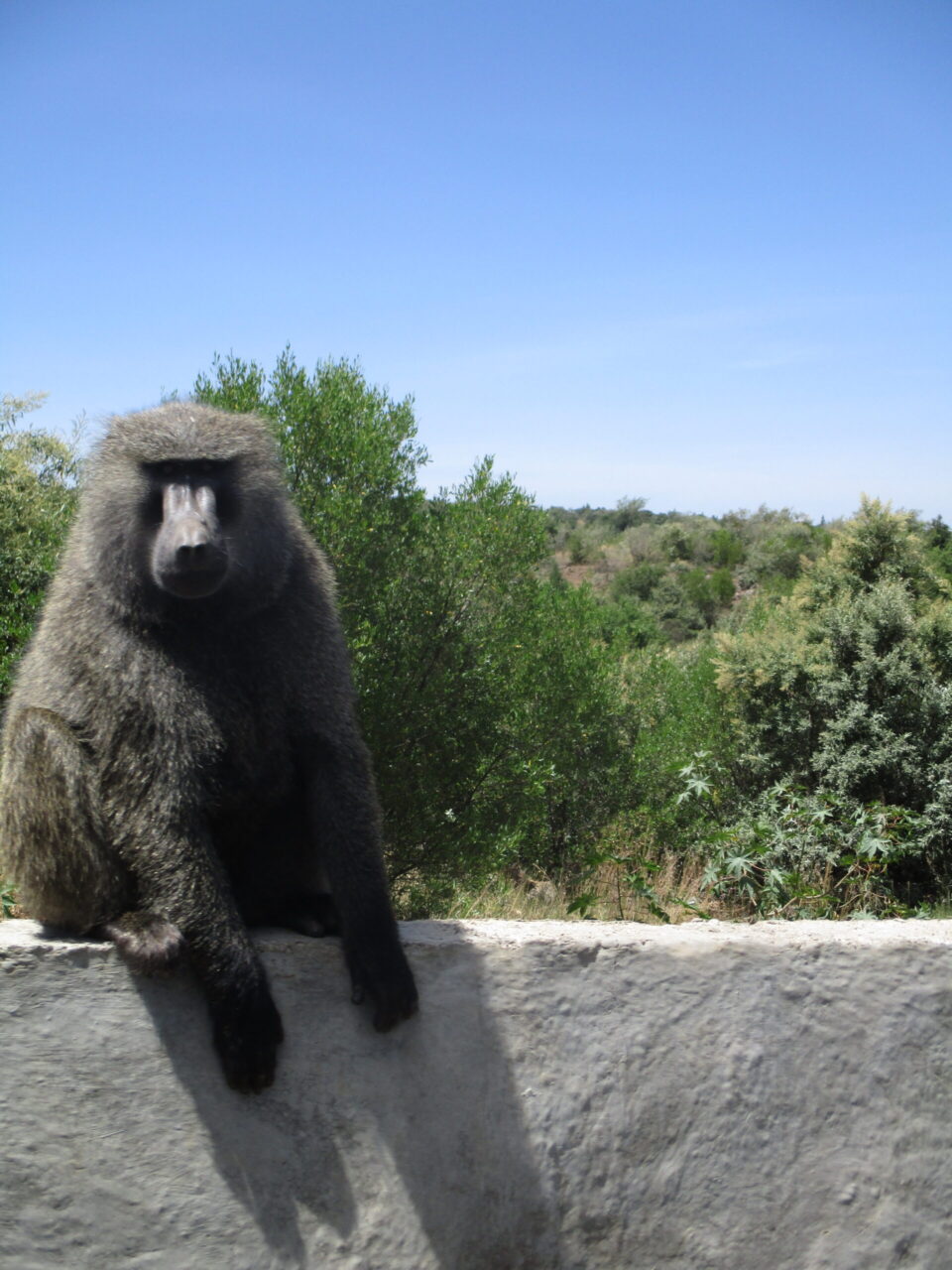 Marcus had very seriously prepared for the trip. He studied all the animals we could meet here, so he easily recognizes them and teaches his companions about them. He becomes our informal guide, while the tour guide seems to know nothing. A young man, not even twenty years old, was sent to accompany us, probably because he was someone’s relative, chosen to collect an undeserved tip.
Marcus had very seriously prepared for the trip. He studied all the animals we could meet here, so he easily recognizes them and teaches his companions about them. He becomes our informal guide, while the tour guide seems to know nothing. A young man, not even twenty years old, was sent to accompany us, probably because he was someone’s relative, chosen to collect an undeserved tip.
“The goal of the safari is to see the magnificent five: leopard, lion, bison, elephant and rhino,” the guide tells us. I immediately felt uneasy. I realized that I had fallen on the tourist factory line, that they had placed me in a vehicle to chase these animals across the prairie, and when we reached them and took pictures, they would throw us off the line and put in new tourists.
The goal of the safari is to see the magnificent five: leopard, lion, bison, elephant and rhino
Isn’t it enough just to be in a place where God showered with blessings? Isn’t it enough to be in nature and enjoy the wonderful landscape it decides to show us at a moment’s notice? Instead, we’ll spend three days speeding madly down disastrous roads in a claustrophobic vehicle, bouncing all the while with a ferocity enough to reshuffle our internal organs. Should we not see five species of animals declared the most attractive by who knows what criteria, because they are neither the rarest nor the largest, nor the most dangerous creatures of the local nature?! Why are crocodiles, giraffes, hippos and extremely rare birds not on that list?
“It’s a hunting term – it means the most difficult animals to hunt on foot,” Marcus explains readily and the guide is amazed, apparently hearing it for the first time. “Well, they’re on the right track,” I thought as I watched the beautiful plain with a family of giraffes on the horizon.
We arrive at the “semi-luxury tent-hotel”, as it says at the entrance. My room is a tent pitched under a straw roof, on a concrete floor. Instead of a ceiling lamp, the skull of a horned animal is hung on the wall: through its eyes comes the light of two neon LED bulbs, which give off a weak white light, so it seems as if I walked into a hotel from a horror movie. They tell us that lions were seen walking around the hotel the other night and that when they put us in the tents, as well as that we don’t go out until an armed escort comes to pick us up. Just in case. And now – good night, see you in the morning!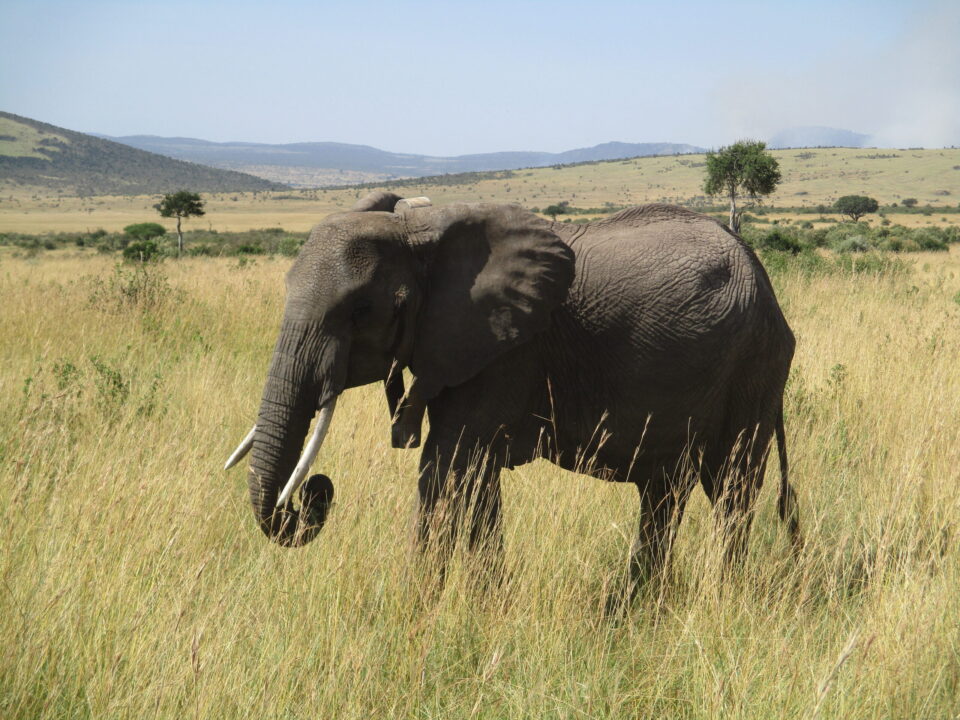 Count of Savannah and Emperors – Cheetahs and Lions
Count of Savannah and Emperors – Cheetahs and Lions
We get up at the crack of dawn. That’s when the animals are most active. After a few minutes of driving, we come across a family of zebras. In the immediate vicinity, hundreds of antelope emerge from the deep grass. Their brownish-white furs spread across the yellow expanse like flowers. Bulls live in particularly large herds. They graze peacefully, although their sharp erect horns indicate that they should not be messed with. They stand neither too close nor too far, just enough to clearly see and photograph them, with the forest, which after the warm summer rain, shimmers in the background.
Between two bushes as tall as trees, a cheetah passes like a count of the savannah. The fastest land animal, faster than many cars, which can reach a speed of almost 130km per hour in just three seconds, ignored us. Its lithe body and characteristic fur, with two to three thousand black dots, fit perfectly into the golden expanse of the savannah, where this predator lurks for its breakfast. The cheetah finally decided to chase a gazelle that was peacefully grazing in the distance. It tried to trap its prey and knock it down, but the gazelle happily ducked into the bushes. Disappointed, the gazelle waved his flamboyant tail, topped with a white strand with several black circles.
My companion Marcus comments: “When it runs, and by the way, it can jump up to seven metres high, the cheetah then flies more than it touches the ground, and it is the only cat that can change its direction in flight! Its flexible spine allows it to make sudden movements even at the highest speeds and it uses its long tail like a steering wheel. While rushing headlong, it can suddenly jump to the side, but also, due to great acceleration, dig into the place! Still, all that doesn’t guarantee cheetah a meal… Half of its attempts to catch prey will fail. And while running, its body gets so hot that its insides would boil if it kept running at the same speed! That’s why its hunt lasts half a minute to a minute and if it survives that long, the prey will usually manage to escape because afterwards, the cheetah has to rest for half an hour. It gets so exhausted that its catch and even its cubs are often stolen by other animals, primarily lions, baboons and hyenas. Life is good at playing games – you are the fastest, it seems that God has given you everything, and yet it is not easy for you to survive”.
The cheetah we follow seems resigned to fate. It is a real loner, with black streaks running from its eyes down its cheeks like tears. It seems to be alone in the world with its empty stomach and no one to understand it, cheer it up or at least leave it alone.
“The fact that it is alone means that it is a female since males are social and always live and hunt in groups,” Marcus teaches us and adds that cheetahs are very endangered, that there are now only between seven and twelve thousand of them in Africa, while a hundred years ago it was about a hundred thousand. The oldest cheetah fossil is between one million and two million years old. They are, in the full sense of the word, natives here.
The lions seem to be unfazed by anything, as they are used to everything already and completely ignore the rush of tourists from all over the world
Then we hear the radio: “A lion at such and such a location, a lion at such and such a location, a lion at such and such a location…”, someone repeats. Our driver signals for us to sit down, accelerates and races like Fangio over potholes, ponds, rocks and grass. We throw ourselves around the vehicle, hit our heads on the bodywork, fall out of our seats and barely get back on them and hold on with all our strength to whatever we can. After a few minutes, we saw seven or eight lions and a vehicle with passengers already observing them.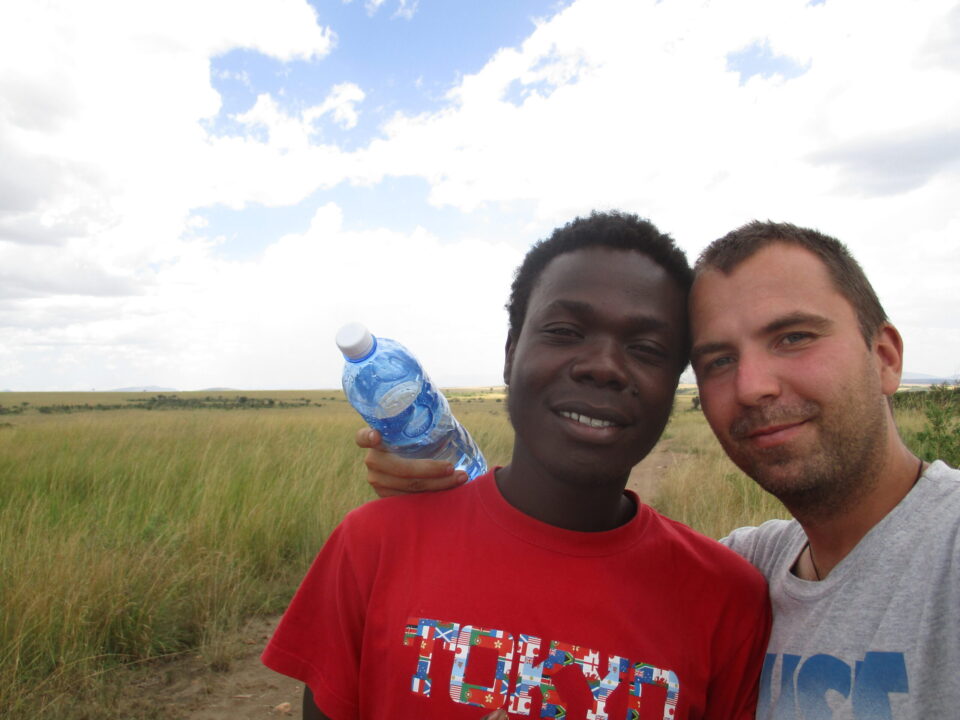 Not even five minutes had passed and vehicles flying from all sides appeared on the horizon. Everyone rushes like crazy. The tin cans are bouncing on the uneven ground, just about to tip over. Suddenly, a semicircle formed around the lions of about fifteen vans and about a hundred tourists who stuck their heads out through the openings in the roofs. The click of a camera echoes.
Not even five minutes had passed and vehicles flying from all sides appeared on the horizon. Everyone rushes like crazy. The tin cans are bouncing on the uneven ground, just about to tip over. Suddenly, a semicircle formed around the lions of about fifteen vans and about a hundred tourists who stuck their heads out through the openings in the roofs. The click of a camera echoes.
“It is very important for tourists to see the magnificent or the big five, as some call them, and especially the lion, otherwise they will not be satisfied, they may even ask for their money back! And who is going to locate them every day on this vast expanse of 1,510 square kilometres?! Some animals live in certain regions and some are constantly moving. Tracking them down just when the tourists are here is not an easy task at all. That’s why we have an agreement that each vehicle informs the others via radio when it encounters the big five animals,” explains our driver. I am suddenly overcome with uneasiness. The vast wilderness that I came to from the other side of the planet seemed to me like a big zoo, where one could observe, with equal interest and sadness, animals that are only apparently completely free and people who behave like this.
The lions seem to be unfazed by anything, as they are used to everything already and completely ignore the rush of tourists from all over the world. About six hundred of them live in this park. The father of the family went to sleep and the lionesses are playing with their mother. It is a well-known fact that the kings of the animal world like to sleep and mate the most. They spend up to twenty hours a day sleeping and when they are mating, they usually do it two or three hundred times in a row, during several days, when they will neither eat nor hunt. Furthermore, females only ovulate when they are stimulated by relentless mating!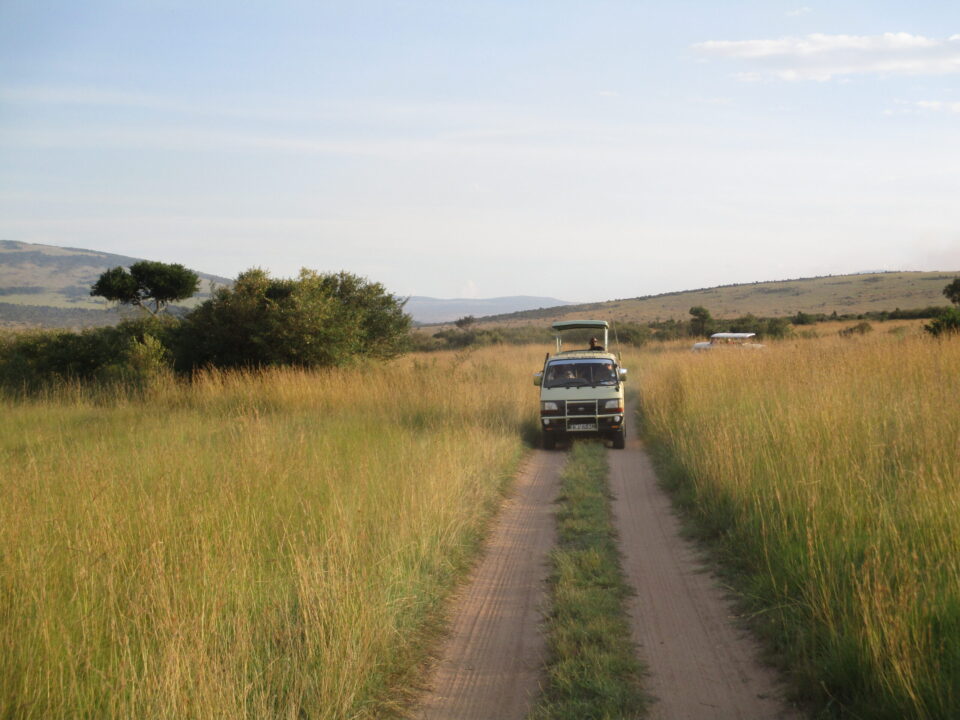 The Lion King opened his eyes and looked directly at us. The cameras were still clicking, but it was impossible to look him in the eye without feeling fearful. He raised his proud head and rose from the grass, his mane was blowing in the wind and he was yawning. The guide, who knows nothing about lions, recalls when a lioness would jump on curious onlookers, pull one out of the car and serve it to the lion for a snack. He found the right moment to tell us: we were photographing the magnificent wild beasts through the roof of the car, only a few metres away from their dangerous jaws.
The Lion King opened his eyes and looked directly at us. The cameras were still clicking, but it was impossible to look him in the eye without feeling fearful. He raised his proud head and rose from the grass, his mane was blowing in the wind and he was yawning. The guide, who knows nothing about lions, recalls when a lioness would jump on curious onlookers, pull one out of the car and serve it to the lion for a snack. He found the right moment to tell us: we were photographing the magnificent wild beasts through the roof of the car, only a few metres away from their dangerous jaws.
The lioness approaches the elder lion humbly, heads lowered almost to the ground, resembling slaves approaching the emperor on their knees. A little further on, the lionesses are making a mess. The mother licks them and checks that they are free of fleas. They are restless, bite each other, and caress like kittens, with only slightly sharper teeth and claws. At one point, the mother puts her paw over them, so they try to reach out and bite her: it seems like practice for some more serious moments in life. They stretch and roll, enjoying the grass and water, with their caring mother and hundreds of tourists who keep filming them. One lioness looks at us like we would be good to lunch on and licks herself; frankly, the truth is that it would be easier to catch any of us than a gazelle. By the way, male lions do not hunt, females do, and males will help them only if the prey is particularly large and belligerent.
The sunset makes a sharp contrast between the earth and the sky. The ground is covered in darkness, only a few bushes or trees emerge from the dark plain and form contours in the vast wide sky full of bright colours. Lions are still in front of us, lying on the grass like the tamest cats. The sun, a glowing ball in the distance, sets below the horizon just below the crown of a tree and appears smaller than it. Everything on earth seems like a set of toys arranged in some higher order, under the command of the high bright sky.
Author: Viktor Lazić
